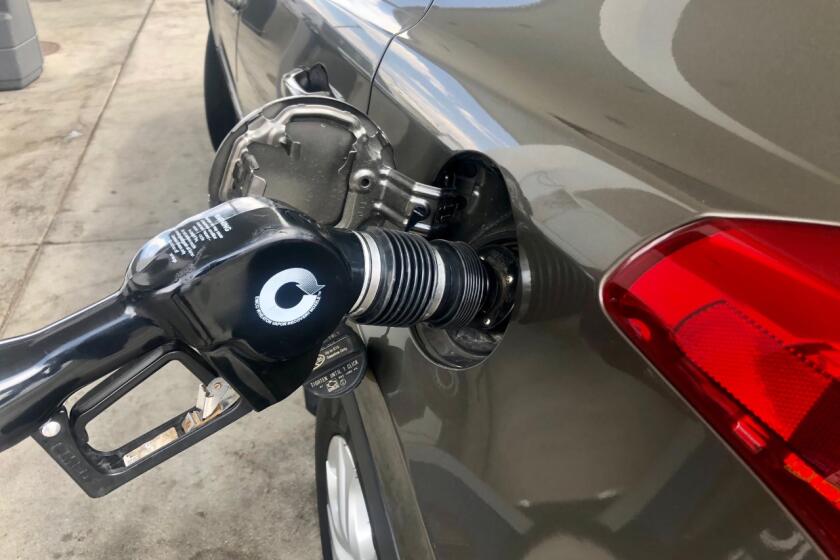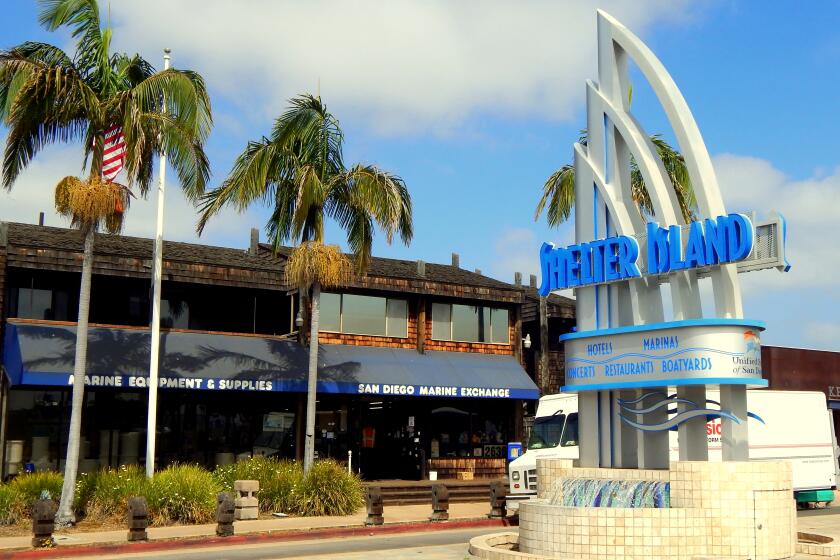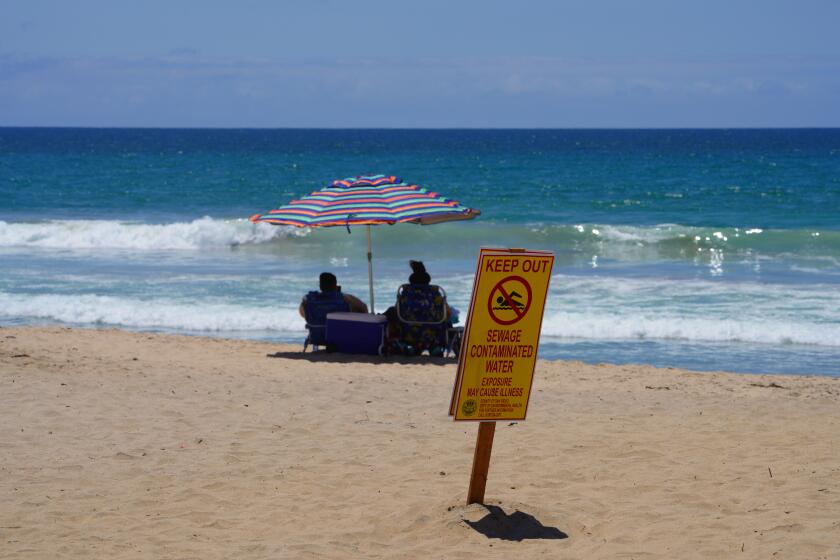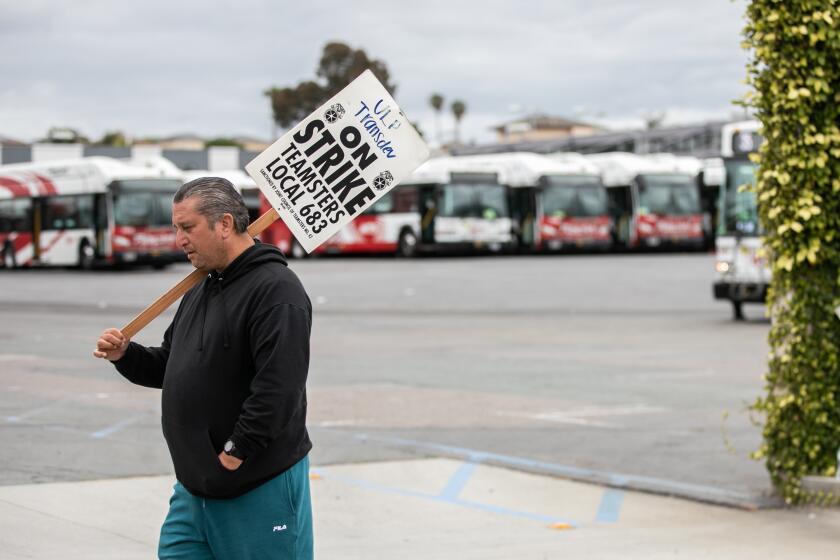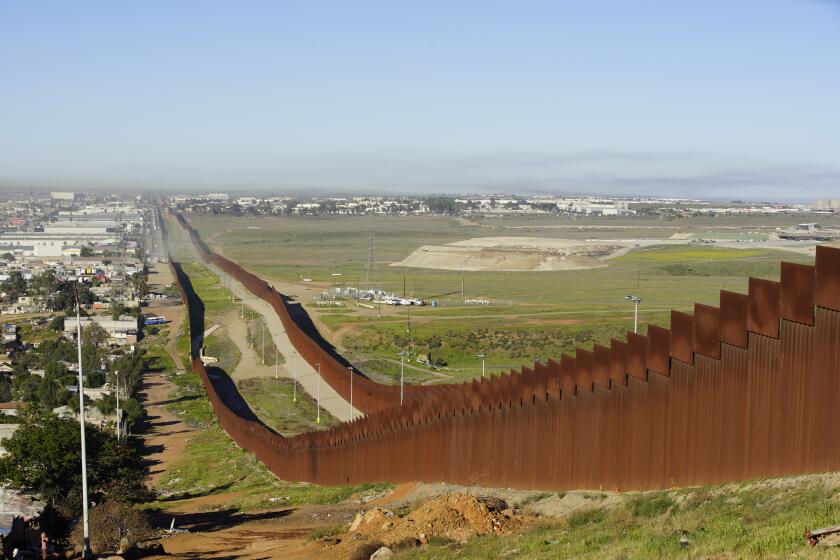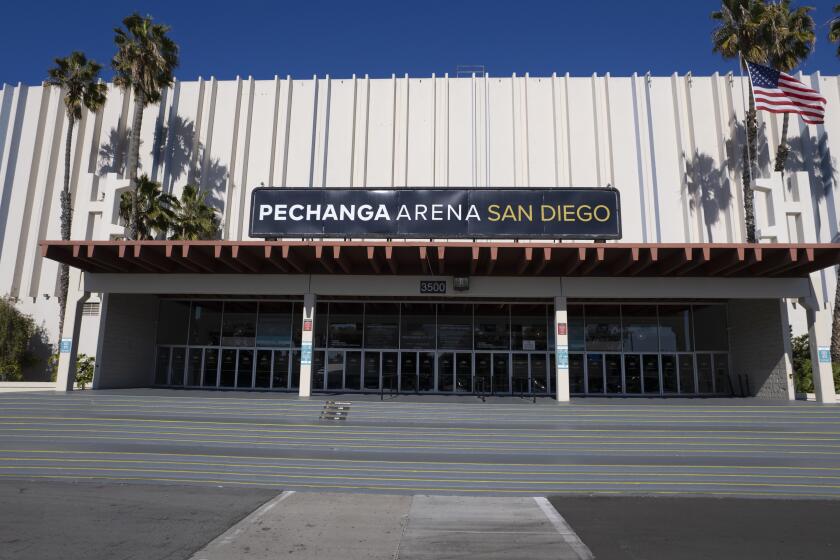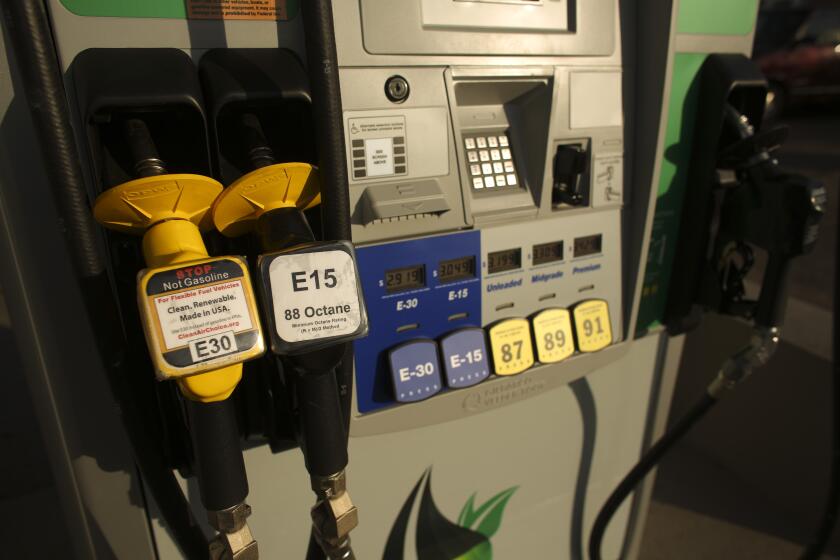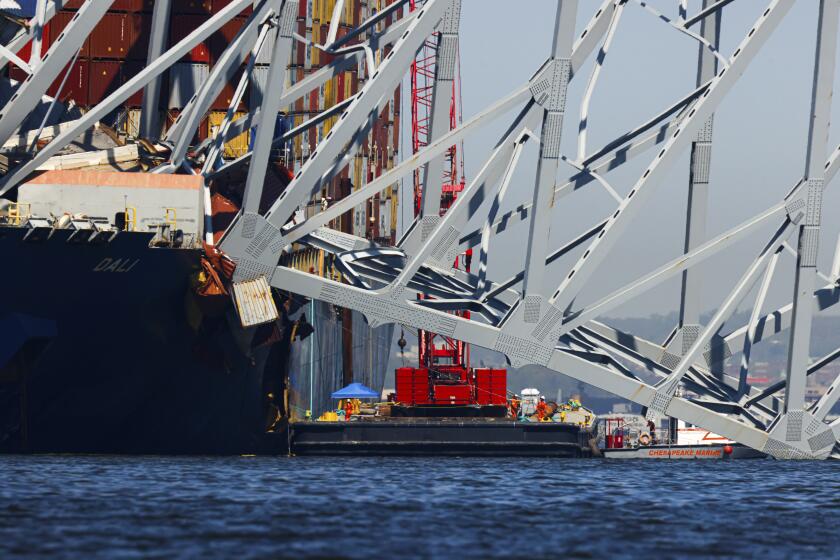The hunt for $5.299-a-gallon gas: San Diegans queue up at Costco as prices continue to surge
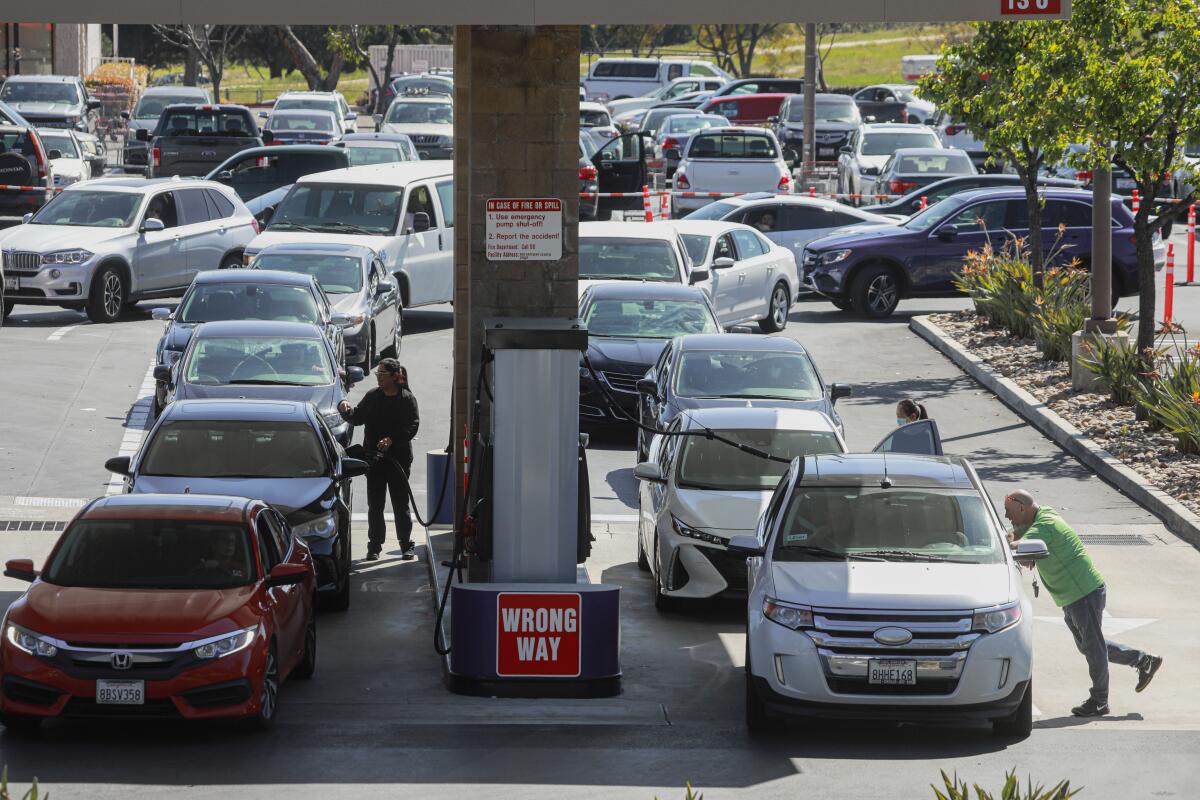
Prices at the pump continue a weeks-long increase as more people hit the road and the ban on Russian oil takes its toll
The line to fill up at the Costco in southeastern San Diego spilled out of the store’s massive parking lot on Wednesday, stretching down the road to Market Street. The wait for gas lasted more than half an hour.
The lure? A gallon of regular at $5.299 — a relative bargain considering the average price in the San Diego metropolitan region rose to $5.711 a day later, up from $4.975 a week ago and $3.822 this time last year, according to the American Automobile Association.
This story is for subscribers
We offer subscribers exclusive access to our best journalism.
Thank you for your support.
“It’s definitely cutting into our other funds, groceries, spending money for going out with our kids,” said Keyla Hubert as she pulled her Ford Explorer up to the pump. “Hopefully, this doesn’t last too long.”
The 26-year-old had driven down from Linda Vista to fill the tank of her SUV at the Costco. She said she’s shelling out around $80, up from about $65 just a few weeks ago.
As for many drivers, a routine once completed on autopilot has now become a calculated hunt for Hubert.
We want to talk with people who drive for a living. How are soaring gas prices impacting how you do your job?
“For the first time in a while, I had to really look up online and compare the gas prices around me,” she said. Residents can use GasBuddy, Geico and Google Maps to find the cheapest fuel in their area.
A team of Costco workers was on hand to help keep the line of vehicles moving, monitoring for potential disputes. At one point, more than 100 cars were queued up in six rows waiting to use the pumps.
“I’ve never seen it like this,” said employee Hunter Herrera, 31. “This is supposed to be our slowest day. Everyone’s agitated, so they’re like fighting. We’re just trying to keep the peace, man.”
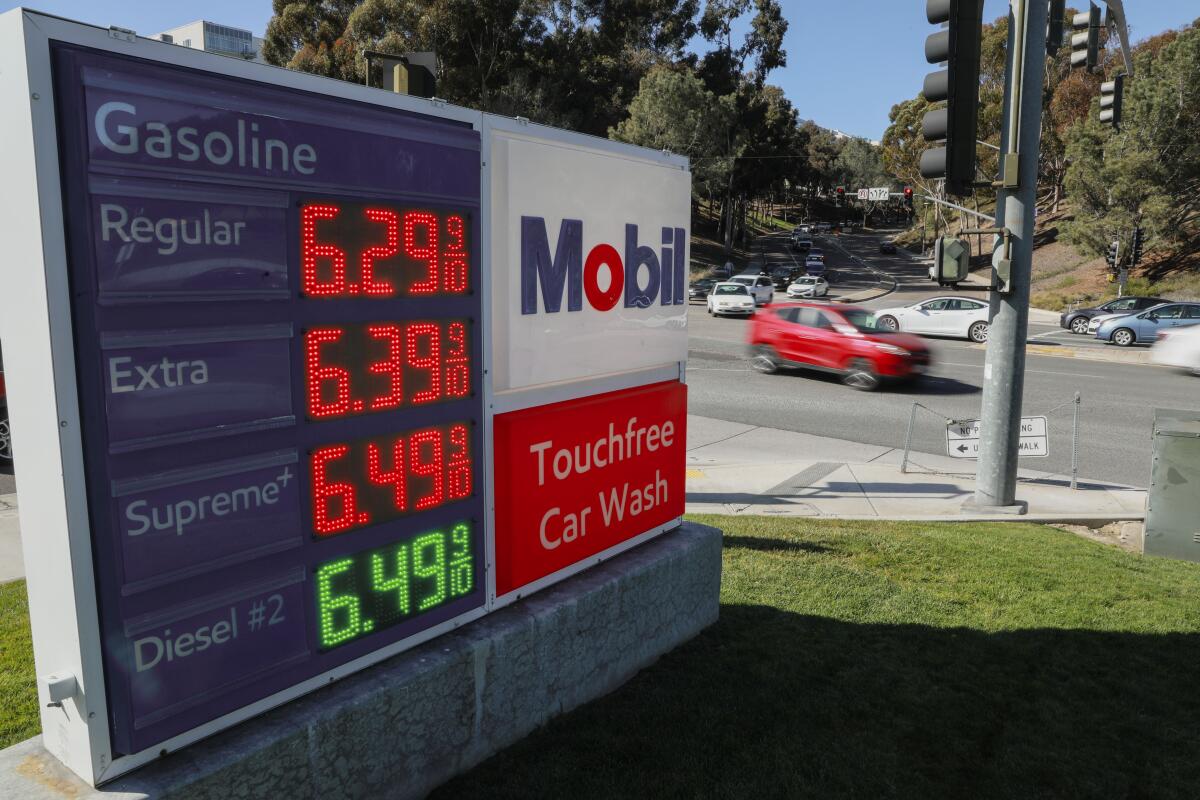
The surge in fuel costs — which comes as President Joe Biden halted U.S. purchases of Russian oil amid the invasion of Ukraine — has turned political. While a recent poll found that 71 percent of Americans backed the move, many conservatives have taken the opportunity to attack Democrats.
A man waiting in the line for gas at the Costco on Wednesday, who declined to give his name, sarcastically yelled from his window: “Thanks Biden! This is what you get with one-party rule.” Meanwhile, Republican politicians, including San Diego Supervisor Jim Desmond, have called for rolling back recent increases to state and federal fuel taxes, intended to help pay for aging roads, bridges and other infrastructure.
In Tuesday’s State of the State address, Gov. Gavin Newsom called for compensating Californians for the recent spike in gas prices. It’s unclear how this would work, but any relief program isn’t likely to hit checking accounts until later this summer.
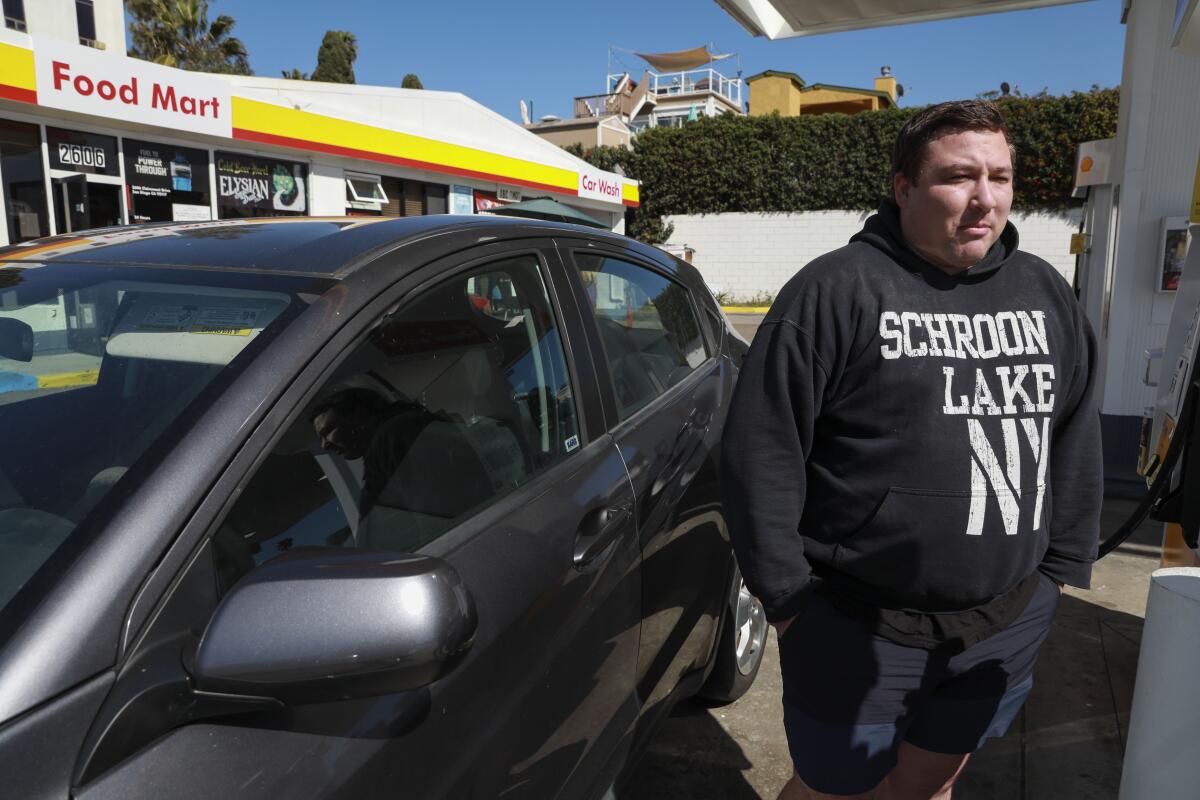
Brett Beuck, who was filling up at a gas station in Clairemont on Wednesday, said he supports the president’s decision: “With what’s going on in Ukraine. I’m willing to deal with the higher gas prices.”
The 30-year-old said the increases don’t impact him too much because he works remotely. But his father has been hit hard.
“I’m lucky to be able to work from home,” he said, “but my dad works in construction. He has to commute really far for work sometimes. I know it’s hurting a lot of people.”
Part of what’s behind higher gas prices is a rebound in driving, according to economists. Oil companies that slowed production during the COVID-19 lockdowns are ramping back up as demand rises.
However, it’s not clear whether Americans will see prices decline any time soon, especially given government efforts to phase out fossil fuels, said David Ely, professor of finance at San Diego State University.
“Even though prices are high now, they [oil producers] are going to ask themselves, ‘Do I want to invest heavily in capacity if I’m not sure it’s going to pay off in the long term?’” he said.
Ely also warned that the major factor behind rising gas prices is the U.S. ban on Russian oil. He’s skeptical that any increase in domestic production could offset that impact.
“The latest spikes we’ve seen here are mostly the invasion,” he said. “Unless there’s a big reversal with what’s happening politically, I think, we’re going to be stuck with high prices for a while.”
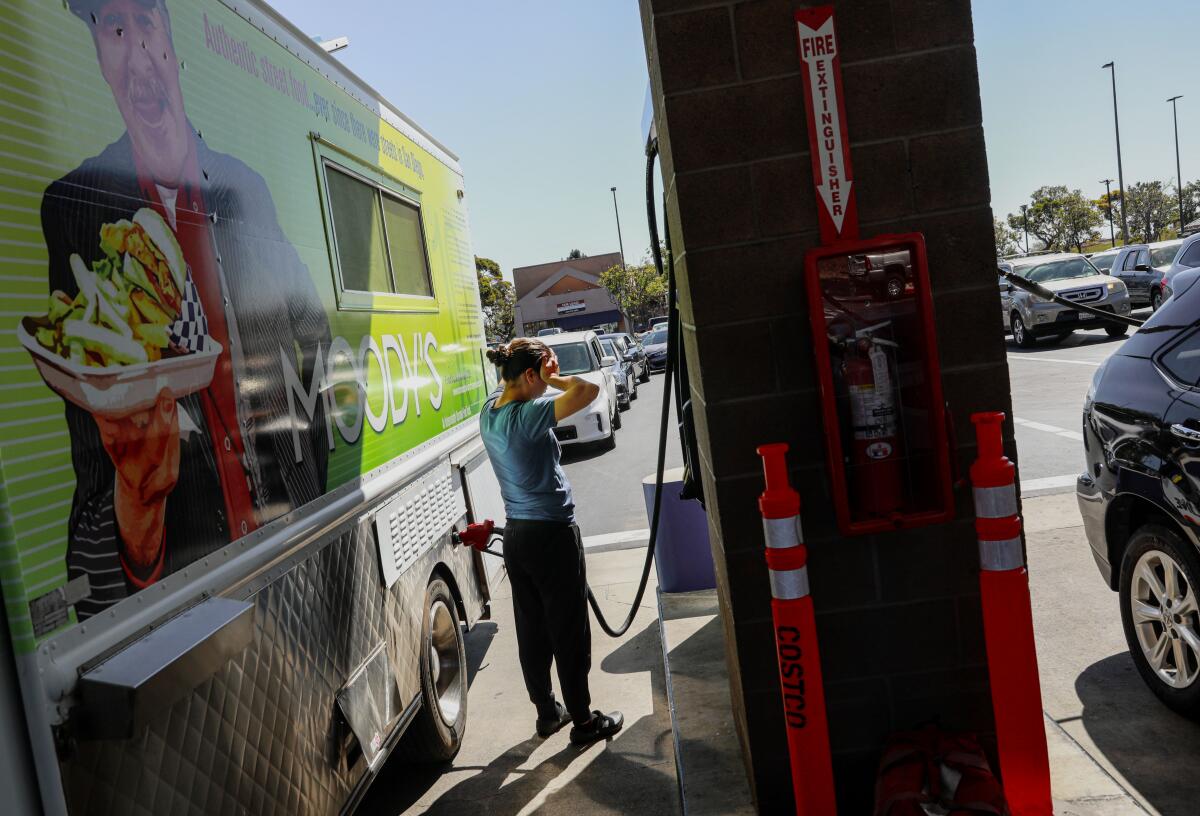
That’s not good news for Mariana Velizquez of National City, who suffered the line at Costco on Wednesday to save a few dollars. She has a 60-mile roundtrip commute to her job at a post office in Escondido.
“I’m going to have to work overtime; that’s for sure,” said the 33-year-old, who’s raising two daughters.
California has the highest prices in the country, in large part due to the state’s suite of taxes and regulations, such as its low-carbon fuel standard. On Thursday, the average price for a regular gallon of gas in the state was $5.694 compared to the national average of $4.318.
It’s important to note that those record-setting numbers are still below the last major surge in prices when adjusted for inflation. In 2008, the national average peaked at a record $4.114 a gallon, while California recorded $4.588 a gallon. Today, those prices would be $5.48 and $6.11, according to the U.S. Bureau of Labor Statistics.
Older drivers can recall months of long lines, and even rationing during the gas crises of the 1970s. At one point, the days you were allowed to buy gas were determined by whether you had an odd or even number at the end of your license plate.
Still, that context is cold comfort for many San Diegans whose wages haven’t kept pace with inflation, said Ray Major, chief economist with the San Diego Association of Governments.
“We haven’t seen the type of increases in salaries that would offset the inflation you’re seeing in the economy right now,” he said. “When you see 7.8 percent inflation, most people aren’t getting those types of raises.”
Major also noted that many people can’t simply choose to drive less in response to sudden surges in fuel prices because they’ve designed their lives around certain commuting patterns. He said working-class San Diegans are starting to feel the economic burden of the current situation.
“The people impacted the most are the low-income people,” he said. “They spend a larger percentage of their salaries on gas and commuting. They also drive older cars that are less efficient.
“At the higher salary levels it’s an irritation,” he added. “At low salary levels, it’s making it extremely difficult on the population.”
Get U-T Business in your inbox on Mondays
Get ready for your week with the week’s top business stories from San Diego and California, in your inbox Monday mornings.
You may occasionally receive promotional content from the San Diego Union-Tribune.
